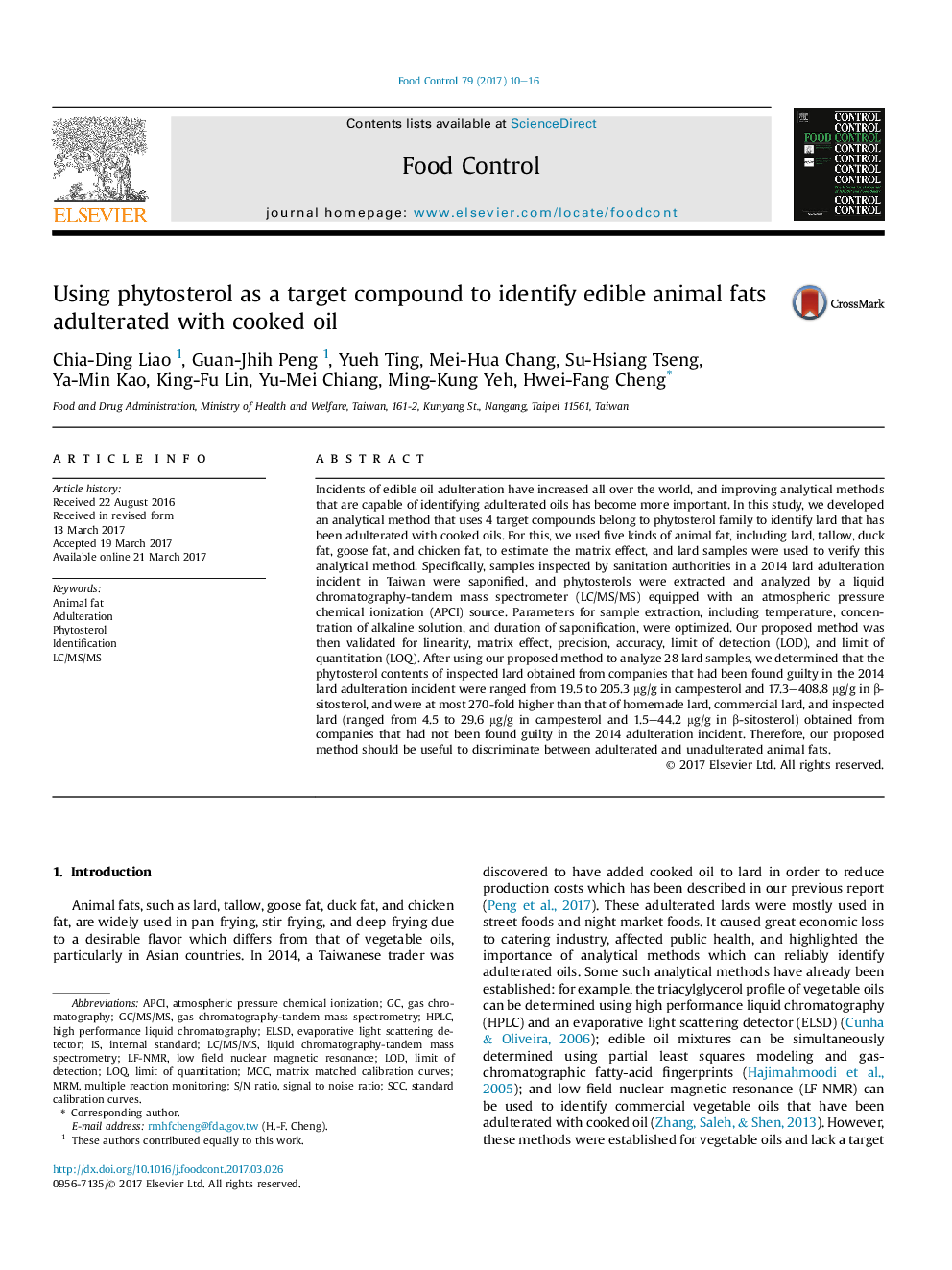| کد مقاله | کد نشریه | سال انتشار | مقاله انگلیسی | نسخه تمام متن |
|---|---|---|---|---|
| 5767426 | 1628385 | 2017 | 7 صفحه PDF | دانلود رایگان |
- Parameters for the saponification of phytosterols were tested.
- Five animal fats were tested for the applicability of this method.
- The most abundant types of phytosterols in adulterated lard were determined.
- The phytosterol content was higher in adulterated lards than in other lards.
Incidents of edible oil adulteration have increased all over the world, and improving analytical methods that are capable of identifying adulterated oils has become more important. In this study, we developed an analytical method that uses 4 target compounds belong to phytosterol family to identify lard that has been adulterated with cooked oils. For this, we used five kinds of animal fat, including lard, tallow, duck fat, goose fat, and chicken fat, to estimate the matrix effect, and lard samples were used to verify this analytical method. Specifically, samples inspected by sanitation authorities in a 2014 lard adulteration incident in Taiwan were saponified, and phytosterols were extracted and analyzed by a liquid chromatography-tandem mass spectrometer (LC/MS/MS) equipped with an atmospheric pressure chemical ionization (APCI) source. Parameters for sample extraction, including temperature, concentration of alkaline solution, and duration of saponification, were optimized. Our proposed method was then validated for linearity, matrix effect, precision, accuracy, limit of detection (LOD), and limit of quantitation (LOQ). After using our proposed method to analyze 28 lard samples, we determined that the phytosterol contents of inspected lard obtained from companies that had been found guilty in the 2014 lard adulteration incident were ranged from 19.5 to 205.3 μg/g in campesterol and 17.3-408.8 μg/g in β-sitosterol, and were at most 270-fold higher than that of homemade lard, commercial lard, and inspected lard (ranged from 4.5 to 29.6 μg/g in campesterol and 1.5-44.2 μg/g in β-sitosterol) obtained from companies that had not been found guilty in the 2014 adulteration incident. Therefore, our proposed method should be useful to discriminate between adulterated and unadulterated animal fats.
Journal: Food Control - Volume 79, September 2017, Pages 10-16
